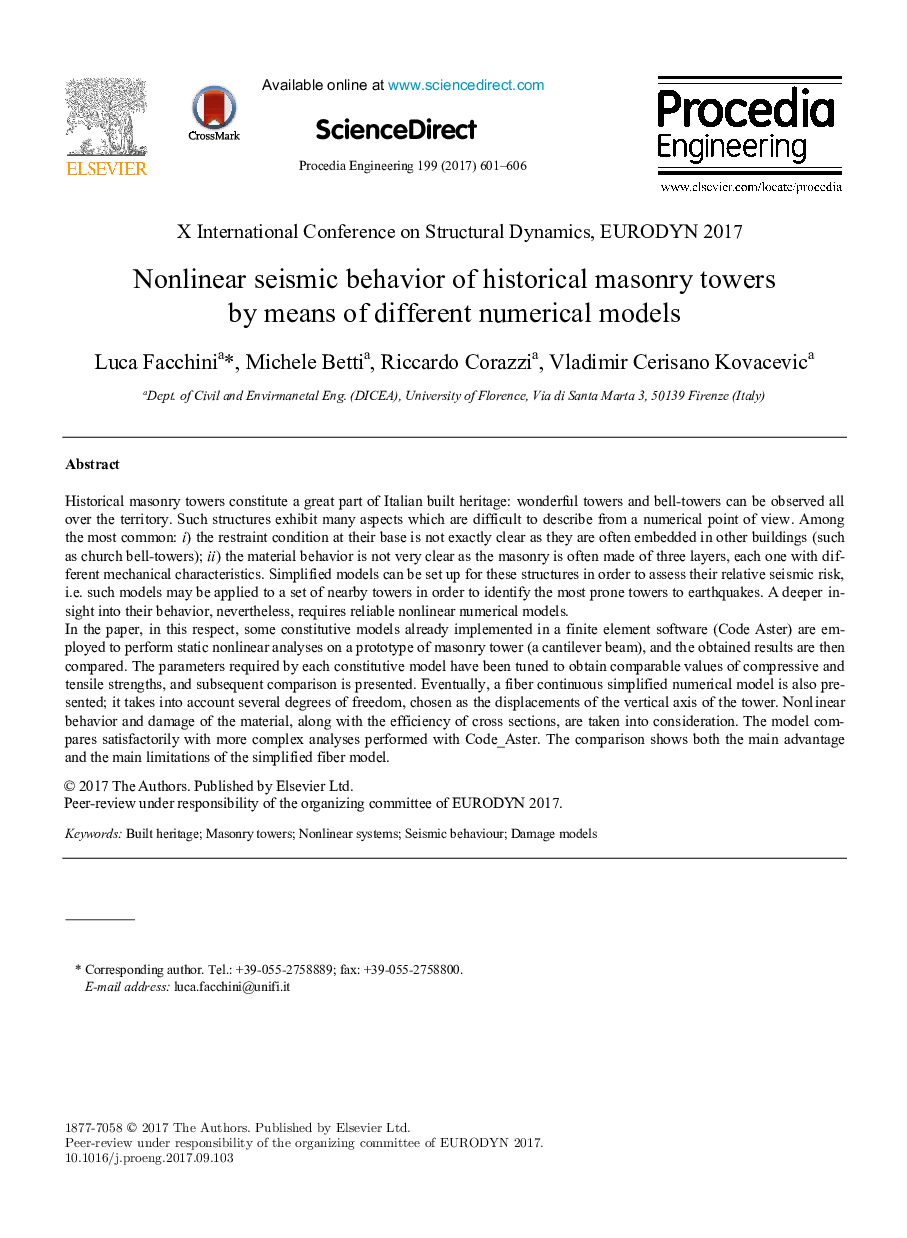| Article ID | Journal | Published Year | Pages | File Type |
|---|---|---|---|---|
| 5026827 | Procedia Engineering | 2017 | 6 Pages |
Historical masonry towers constitute a great part of Italian built heritage: wonderful towers and bell-towers can be observed all over the territory. Such structures exhibit many aspects which are difficult to describe from a numerical point of view. Among the most common: i) the restraint condition at their base is not exactly clear as they are often embedded in other buildings (such as church bell-towers); ii) the material behavior is not very clear as the masonry is often made of three layers, each one with different mechanical characteristics. Simplified models can be set up for these structures in order to assess their relative seismic risk, i.e. such models may be applied to a set of nearby towers in order to identify the most prone towers to earthquakes. A deeper insight into their behavior, nevertheless, requires reliable nonlinear numerical models.In the paper, in this respect, some constitutive models already implemented in a finite element software (Code Aster) are employed to perform static nonlinear analyses on a prototype of masonry tower (a cantilever beam), and the obtained results are then compared. The parameters required by each constitutive model have been tuned to obtain comparable values of compressive and tensile strengths, and subsequent comparison is presented. Eventually, a fiber continuous simplified numerical model is also presented; it takes into account several degrees of freedom, chosen as the displacements of the vertical axis of the tower. Nonlinear behavior and damage of the material, along with the efficiency of cross sections, are taken into consideration. The model compares satisfactorily with more complex analyses performed with Code_Aster. The comparison shows both the main advantage and the main limitations of the simplified fiber model.
